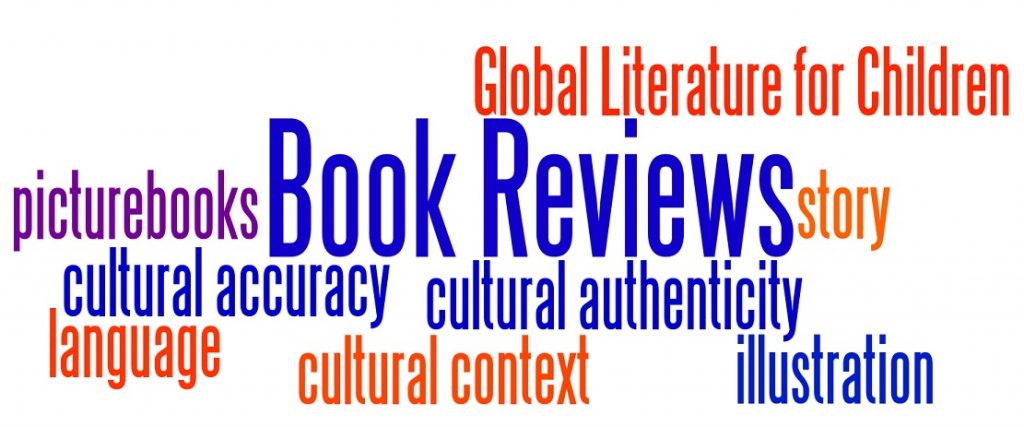By Judi Moreillon, Literacies and Libraries Consultant
Part 2: Publication Practices
This month, I interview Pima County Public Libraries children’s librarian and book reviewer, Mary Margaret Mercado. Last week, Mary Margaret responded to questions related to her goals and process for reviewing books. This week, we explore publication practices. To guide our thinking, we create a framework from Critical Multicultural Analysis of Children’s Literature: Mirrors, Windows, and Doors by Maria José Botelho and Masha Kabakow Rudman and WOWLit’s “Evaluating Literature for Authenticity.”

Publication Practices
These are the questions that guide our thinking about picturebook publication practices:
- Who is the author, illustrator and/or translator?
- What are their backgrounds?
- Who was the original publisher?
Judi: Can you give an example of a book where the author and/or illustrator’s lack of cultural knowledge poses a particular challenge for you in terms of writing an accurate yet critical review?
Mary Margaret: One picturebook from 2016 was especially problematic. Juan’s Sweet and Spicy Memory is about a Mexican boy’s intercultural interactions with English-speaking tourists who visit his family’s restaurant. The book was written by a South Korean woman who did not have prior publications of books set in Mexico. The illustrator was British. The Korean publisher (with an office in Los Angeles) included this note about his illustrations: “vivid tone and simplistic characters bring out the sentiments of South America.” Alarm bells rang–Mexico is in North America!
Before reading the story, I reviewed the information about Mexico found at the back of the book. I found historical and cultural inaccuracies, including some related to chiles and salsa, which are central to the story. There were many aspects of the story that did not ring true. It is unlikely that mariachis would sing “La Cucaracha” in a restaurant. The tourists communicate with Juan by asking, “Taco? Taco?” The foods described and illustrated in the book are primarily Tex-Mex, not Mexican.
The illustrations further complicate the cultural content of the book. The male characters’ clothing and facial features are from Caribbean or Latin American countries and possibly other far-flung locations. The dancers at the Cinco de Mayo fiesta are wearing flamenco rather than folklórico dresses. There is an illustration that includes a Yucatán Peninsula Mayan pyramid alongside a volcano found in central Mexico.
I cited all of these issues and concerns in my review and gave this book a “not-recommended” rating.
Judi: Language is one complex aspect of culture. What particular language-translation challenges do you notice regarding books translated from English to Spanish, or Spanish to English? Can you give an example of an especially successful translation and why you believe it works?
Mary Margaret: Since language reflects culture, translation from one language to another is a complex proposition. Just as Australian, British and U.S. English are different, so is Spanish spoken in various parts of the world. In children’s publishing, the New York-centric and Barcelona-centric publishing industry predominate the books available to young readers. This can lead to an erroneous assumption that English and Spanish are uniform languages that can be written and read without a cultural context.
Considering this, publishers and translators have a responsibility to maintain the integrity of the language and culture as well as the story in any translation. Even though I am culturally competent in both Mexican culture and Spanish language as spoken in (parts of) Mexico and the U.S., I would not be a competent translator for a story situated in Cuban or Puerto Rican culture. It is not appropriate to assume that anyone who is fluent in both English and Spanish can effectively translate any story into the other language.
This can be further complicated when the original story is written in a third language and translated into Spanish in Barcelona. Then, when that book is distributed to readers in the U.S. who speak many variations of Spanish and may be completely unfamiliar with the cultural content of the story, confusion, inauthenticity and inaccuracy can result.
In my opinion, one of the more successful picturebook translations from English to Spanish I have read is The Parrot Tico Tango by Anna Witte. The author-illustrator-translator was born in Germany, grew up in Spain, and moved to the U.S. as an adult. The story is set in the rainforest. The greedy parrot wants all the fruits of the forest for himself. Ms. Witte’s cultural background and her book’s lively language and humorous story support the successful translation: El loro tico tango.
Judi: While most translators will not have that depth of knowledge, publishers may be able to improve the success of books in translation by considering the complexity of interplay between language, culture and story.
Next week, Mary Margaret and I will focus on the authenticity of the story and visual elements in children’s picturebooks.
References
Botelho, Maria José, and Masha Kabakow Rudman. 2009. Critical Multicultural Analysis of Children’s Literature: Mirrors, Windows, and Doors. New York: Routledge.
WOWLit.org. “Evaluating Literature for Authenticity.” http://wowlit.org/links/evaluating-global-literature/evaluating-literature-for-authenticity
Journey through Worlds of Words during our open reading hours: Monday-Friday 9 a.m. to 5 p.m. and Saturday 9 a.m. to 1 p.m. Check out our two online journals, WOW Review and WOW Stories, and keep up with WOW’s news and events.
- Themes: Judi Moreillon, Mary Margaret Mercado
- Descriptors: Interviews & Profiles, WOW Currents
